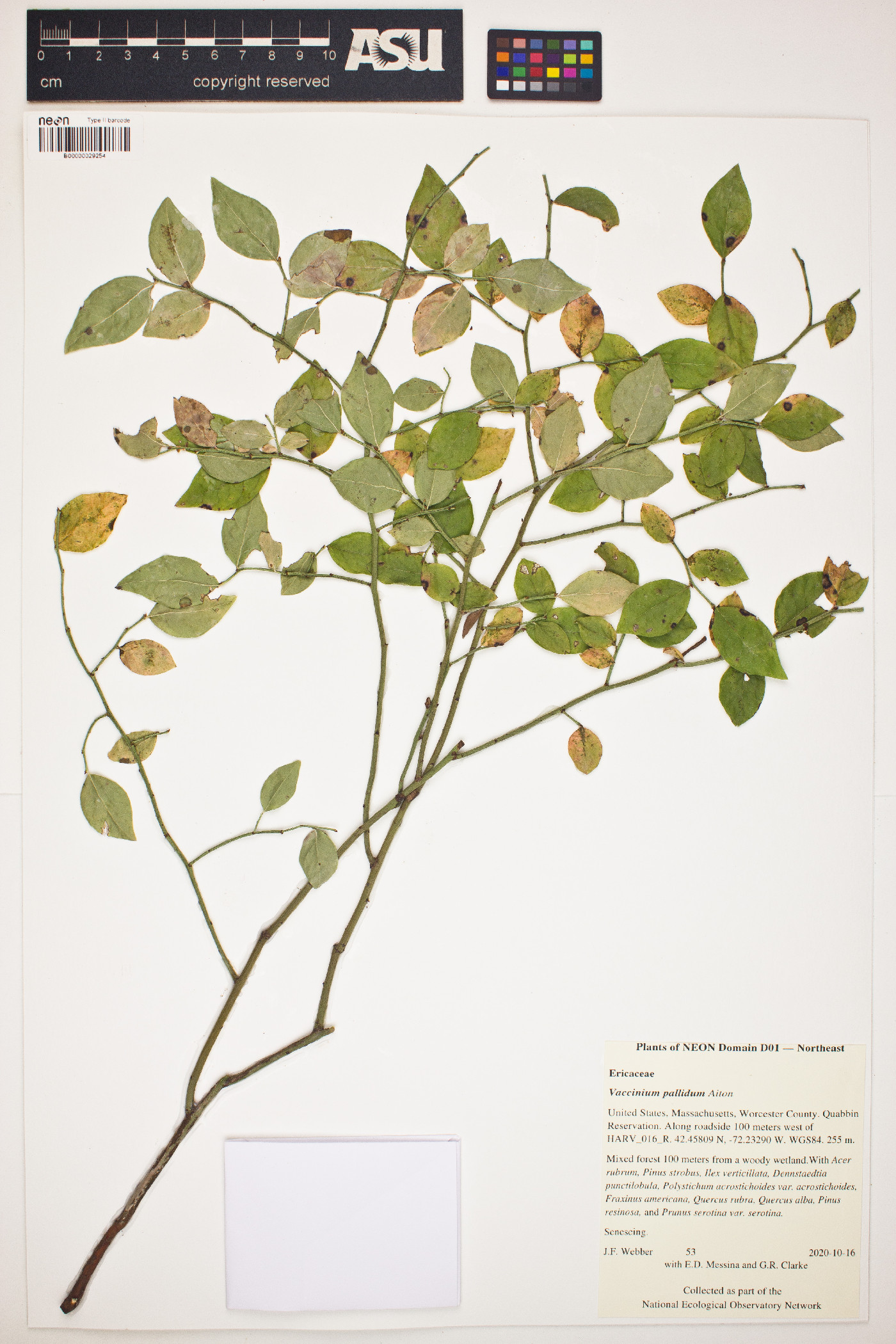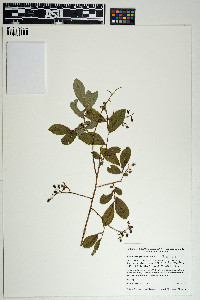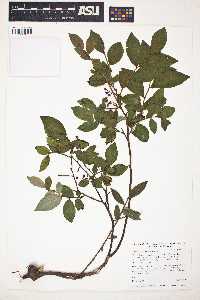|
|
|
|
Family: Ericaceae
Blue Ridge blueberry
[Cyanococcus liparis Small, moreCyanococcus pallidus (Ait.) Small, Cyanococcus subcordatus Small, Cyanococcus tallapusae Coville ex Small, Cyanococcus vacillans (Kalm ex Torr.) Rydb., Vaccinium altomontanum Ashe, Vaccinium corymbosum var. pallidum (Aiton) A.Gray, Vaccinium vacillans Kalm ex Torr., Vaccinium vacillans var. crinitum Fernald, Vaccinium vacillans var. missouriense Ashe, Vaccinium viride Ashe] |
Plants forming small to extensive, open colonies, 0.8-10 dm; twigs green, glaucous, or yellow, ± angled, hairy in lines, often glabrous. Leaves deciduous; blade pale green or glaucous abaxially, dark green adaxially, ovate to broadly elliptic, 25-38 × 13-22 mm, membranous to subcoriaceous, margins ± entire, abaxial surface usually glabrous, rarely hairy, eglandular. Flowers: calyx green, glaucous, glabrous; corolla greenish white with pink striping, cylindro-urceolate, 4-10 mm; filaments ± glabrous. Berries usually blue, glaucous, 4-8 mm diam., glabrous. Seeds 5-20, ca. 1 mm. 2n = 24, 48. Flowering mid-late spring. Dry, open oak or oak- hickory woods, open pine woods, ledges, abandoned farmland or cut-over deciduous forests; 0-1600 m; Ont.; Ala., Ark., Conn., Del., D.C., Ga., Ill., Ind., Kans., Ky., Maine, Md., Mass., Mich., Miss., Mo., N.H., N.J., N.Y., N.C., Ohio, Okla., Pa., R.I., S.C., Tenn., Vt., Va., W.Va., Wis. The flowers of Vaccinium pallidum are visited primarily by Andrena carlini Cockerell and Bombus spp. This species occasionally hybridizes with V. angustifolium, yielding V. ×dobbinii Burnham.
Colonial shrubs 2-8(-10) dm; bud-scales rounded above; lvs ovate to broadly elliptic, entire or seldom serrulate, the larger ones mostly (2.5-)3-5 cm, half as wide, glaucous beneath, sometimes also somewhat hairy; cal and pedicel glaucous; cor cylindric to urceolate, 4-8 mm; fr 5-8 mm, blue-glaucous or rarely black; 2n=24, or seldom 48. Dry upland woods and old fields; Me. to Minn., s. to Ga., Ala., Ark., and e. Okla. Apr.-June. (V. altomontanum; V. vacillans; Cyanococcus liparis; C. subcordatus; C. v.) Morphologically intermediate between nos. 11 [Vaccinium angustifolium Aiton] and 13 [Vaccinium myrtilloides Michx.], but apparently distinctive. Gleason, Henry A. & Cronquist, Arthur J. 1991. Manual of vascular plants of northeastern United States and adjacent Canada. lxxv + 910 pp. ©The New York Botanical Garden. All rights reserved. Used by permission. |




